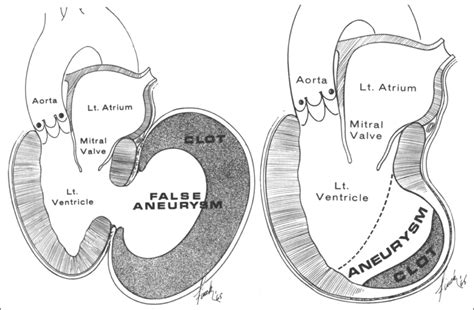lv aneurysm treatment | left ventricular aneurysm surgery lv aneurysm treatment LV aneurysms are manageable through medical treatment directed towards its complications with anticoagulation, surgical resection of an aneurysm in a large aneurysm, valvular dysfunction, or worsening complications. AG Group is a leading Design & Build, Turnkey, MEP and Maintenance .
0 · left ventricular pseudoaneurysm vs aneurysm
1 · left ventricular aneurysm treatment
2 · left ventricular aneurysm surgery
3 · left ventricular aneurysm repair surgery
4 · left ventricular aneurysm repair
5 · left ventricular aneurysm guidelines
6 · apical aneurysm vs pseudoaneurysm
7 · Lv pseudoaneurysm vs true aneurysm
International Recruitment Agency - Global Footprint. At Skills Provision we believe in the concept of continual technical development. Our aim is to fully support employers whilst .
Left ventricular (LV) aneurysms and pseudoaneurysms are two complications of myocardial infarction (MI) that can lead to death or significant morbidity. This topic reviews the .
LV aneurysms are manageable through medical treatment directed towards its complications with anticoagulation, surgical resection of an aneurysm in a large aneurysm, valvular dysfunction, or worsening complications. Left ventricular (LV) aneurysms and pseudoaneurysms are two complications of myocardial infarction (MI) that can lead to death or significant morbidity. This topic reviews the diagnosis and management of patients with aneurysms or pseudoaneurysms caused by MI.What is true left ventricular aneurysm surgery? True ventricular aneurysms that cause problems like chest pain or heart failure may need surgical treatment. Heart surgeons perform an open-heart surgery procedure called ventricular reconstructive surgery or ventricular remodeling.
The preoperative left ventricular end-systolic volume index (LVESVI) is a critical measurement in planning the SAVER operation. Patients with symptoms of heart failure but LVESVI < 60 ml/m2 should not undergo ventricular remodeling, as ventricular size may become too small.
Notably, surgical ventricular reconstruction (SVR) is an effective treatment for LVA, aiming to restore the normal volume and structure of the left ventricle, thereby improving cardiac function. However, the criteria for selecting patients for SVR treatment remains a .LV aneurysm treatment should also accomplish the following: restore more normal LV volume and appearance, exclude akinetic segments of myocardium, reapproximate submitral apparatus in a manner that preserves mitral competency, and reduce endocardial nidus for thrombus.Surgical treatment of left ventricular pseudo-aneurysm is urgently recommended whenever is possible because of the high risk of rupture (30–45%) and sudden death by tamponade [21,27]. 5. Conclusion. Left ventricular aneurysm and pseudoaneurysm are a mechanical complications of MI that pose a problem of management.

This study was performed to analyze and compare the efficacy of three treatment methods for left ventricular aneurysm (LVA): coronary artery bypass grafting (CABG) combined with left ventricular resection, drug treatment, and percutaneous coronary intervention (PCI).The left ventricular aneurysm is a pathological condition defined as an akinetic or dyskinetic area of the left ventricle . The primary aim of surgical treatment is LV “reshaping”, which improves cardiac function, symptoms and life expectancy. In the late 1980s, cardiac surgeon Vincent Dor developed the new surgical concept of LV aneurysm .
Left ventricle aneurysms (LVAs) are areas of thin and fibrotic myocardium leading to out pouching of the wall. Commonly seen as sequale of Myocardial infarction, they can lead to potentially devastating consequences. Case.
LV aneurysms are manageable through medical treatment directed towards its complications with anticoagulation, surgical resection of an aneurysm in a large aneurysm, valvular dysfunction, or worsening complications. Left ventricular (LV) aneurysms and pseudoaneurysms are two complications of myocardial infarction (MI) that can lead to death or significant morbidity. This topic reviews the diagnosis and management of patients with aneurysms or pseudoaneurysms caused by MI.What is true left ventricular aneurysm surgery? True ventricular aneurysms that cause problems like chest pain or heart failure may need surgical treatment. Heart surgeons perform an open-heart surgery procedure called ventricular reconstructive surgery or ventricular remodeling.The preoperative left ventricular end-systolic volume index (LVESVI) is a critical measurement in planning the SAVER operation. Patients with symptoms of heart failure but LVESVI < 60 ml/m2 should not undergo ventricular remodeling, as ventricular size may become too small.
Notably, surgical ventricular reconstruction (SVR) is an effective treatment for LVA, aiming to restore the normal volume and structure of the left ventricle, thereby improving cardiac function. However, the criteria for selecting patients for SVR treatment remains a .
left ventricular pseudoaneurysm vs aneurysm
LV aneurysm treatment should also accomplish the following: restore more normal LV volume and appearance, exclude akinetic segments of myocardium, reapproximate submitral apparatus in a manner that preserves mitral competency, and reduce endocardial nidus for thrombus.
Surgical treatment of left ventricular pseudo-aneurysm is urgently recommended whenever is possible because of the high risk of rupture (30–45%) and sudden death by tamponade [21,27]. 5. Conclusion. Left ventricular aneurysm and pseudoaneurysm are a mechanical complications of MI that pose a problem of management. This study was performed to analyze and compare the efficacy of three treatment methods for left ventricular aneurysm (LVA): coronary artery bypass grafting (CABG) combined with left ventricular resection, drug treatment, and percutaneous coronary intervention (PCI).The left ventricular aneurysm is a pathological condition defined as an akinetic or dyskinetic area of the left ventricle . The primary aim of surgical treatment is LV “reshaping”, which improves cardiac function, symptoms and life expectancy. In the late 1980s, cardiac surgeon Vincent Dor developed the new surgical concept of LV aneurysm .
left ventricular aneurysm treatment
$4,100.00
lv aneurysm treatment|left ventricular aneurysm surgery


























